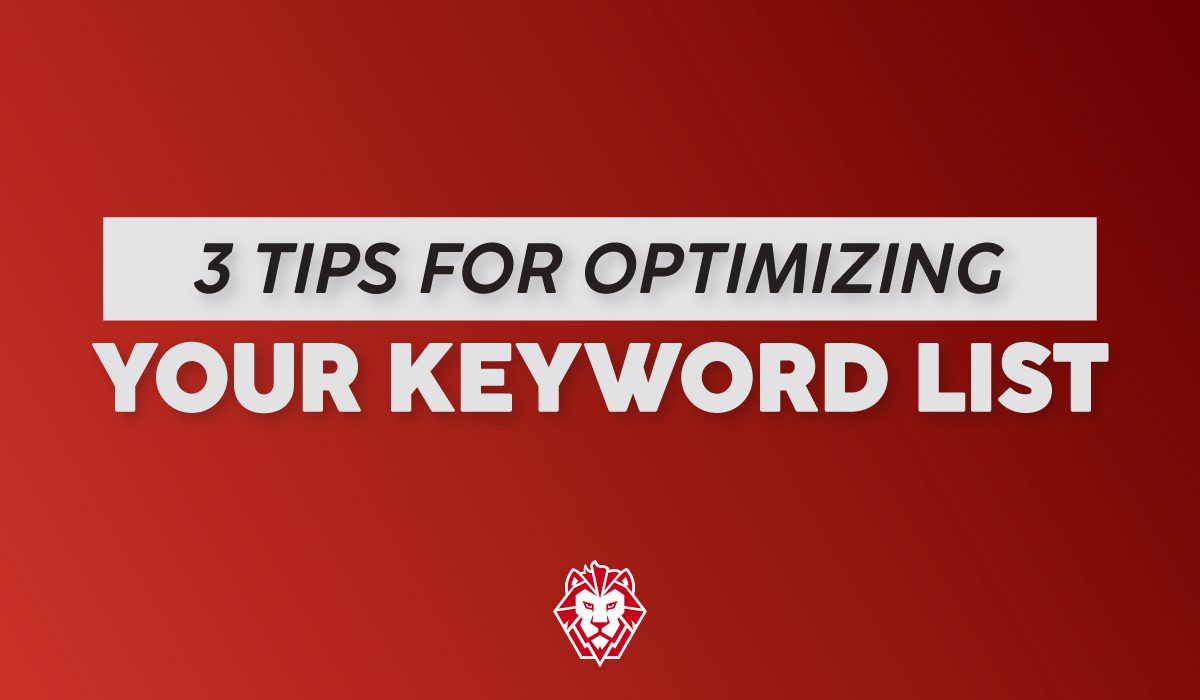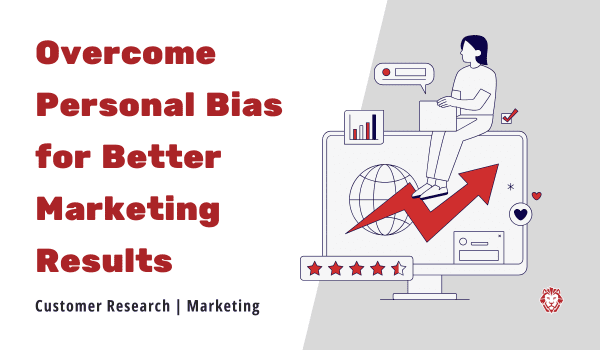
3 Tips For Optimizing Your Keyword List For SEO
Keywords are a cornerstone of your organic and paid SEO efforts, and curating an effective list can be a complicated task. In this blog, we’ll dive into 3 different ways you can create an optimized keyword list that drives traffic to your website.
1. Target Intent-Based Keywords
Meeting user needs is paramount in today’s SEO landscape. When you think about SEO, you really want to approach it in the same way that you approach business as a whole.
What is the primary goal of a business? And no, it’s not to sell products or services.
Instead, the first and most important goal of every successful business is to solve problems. Making sales and signing on clients is simply a byproduct of meeting that goal. If your business isn’t solving your desired customers’ problems, they will have absolutely no reasons to do business with you.
This is a universal truth of business that is applicable regardless of whether you’re running a real estate agency or a fast-food joint. People are giving you money to have their problems solved.
The same is true of SEO. Your SEO keyword strategy need to focus on solving the problems that your potential customers are facing. And to solve those problems, you need to understand and create content that specifically meets a variety of needs that can be expressed in their search queries. This is where Keyword lists are important.
There are four categories of keywords that cover the various problems a customer could be facing to include in your keyword list: informational keywords, commercial keywords, transactional keywords, and navigational keywords.
Informational Keywords
Creating content based on informational keywords is a great way to capture traffic at the very top of the marketing funnel. When you publish this content, the pure intent behind it must be to inform users about your product or services.
For example, imagine you own a print-on-demand (POD) clothing company. Your primary target audience is going to be brand owners who want to outsource the production and shipping of their clothing merch to a business like yours.
As they’re searching for a POD servicer, they’re going to be comparing various companies to see which one meets their needs the best.
The kind of information that customers would be searching for would include production/shipping costs, website integrations, order fulfillment times, where products are made, etc.
There are a variety of types of content you can create to answer these questions: tutorials, guides, walkthroughs, FAQs, and more.
The goal of informational keywords is to provide value by answering questions while also convincing TOF customers to choose your brand over your competitors. Create content that answers the who, what, when, where, and why of your business. If done correctly, you should be able to convince these users to answer your CTA and either sign-up or purchase your product.
Commercial Keywords
Commercial keywords are chosen to target users that are in the middle of the marketing funnel. These users already have some baseline knowledge of your product or service and want to learn in-depth details about your company and compare you to your competitors.
Let’s go back to the example we used earlier.
If you’re a print-on-demand clothing company, your customers will probably want to know the type of fabrics used, whether you place your own marketing materials in each package or not, how much digitization fees cost per purchased item, customer reviews of your products, and other details that would be compared to competitors.
If a potential client is looking to sell clothing made in the USA, and you have the largest selection of products made in the USA, making a comparison to your competitors would quickly show you as the better choice.
To target these commercial keywords, you would want to create content that focuses on pros and cons lists, comparisons, testimonials, listicles, or even tutorials/walkthroughs.
Transactional Keywords
Once a user has a well-informed understanding of the different products and services they have to choose between, their next step will be to sign-up for a service or make a purchase. Customers using transactional keywords in their search queries have arrived at the bottom of the marketing funnel. Including transactional keywords into your keyword list is essential.
It’s also important to note that you can target these keywords in your paid ad campaigns in addition to your organic content strategy. But, be aware that if you’re paying for ads on these keywords, it is going to come with a steep cost-per-click. Transactional keywords are highly competitive because they are laser focused on bringing results directly to businesses.
Let’s use a different example.
Say you run a business that focuses on selling refurbished electronics. You would want to target keywords like:
“Buy used iPhone”
“Best deals on used Sony cameras,”
And “Used electronics near XYZ city.”
These kinds of searches directly signal that a user is looking to buy, so your content should mostly revolve around product landing pages, discount offers, or ads that direct people to your website and brick-and-mortar stores.
Navigational Keywords
Navigational keywords are the final type of intent-based keyword. These keywords are explicitly used for directing traffic to your website. If customers are using navigational keywords to search for a website, it’s likely that they’ve decided to make a purchase from your website.
2. Use A Mix of Short-Tail and Long-Tail Keywords
Instead of going into meticulous details about the various utilities of these types of keywords, we’re going to give you the long and the short of this hotly debated topic.
Short-tail keywords are less than 3 words long, are generally very broad, get a lot of traffic, and are highly competitive. Long-tail keywords, on the other hand, are more than 3 words long, are very specific, and are not as competitive.
Here’s an example.
“Coffee shop” is a non-descript short tail keyword that brings up a variety of results, including trending tweets mentioning coffee shops, a handful of nearby coffee shops within a varying radius (the first being Starbucks), and even an IMDB review of the 2014 movie of the same name.
This same search can be made using long-tail keywords like “coffee shops near Mission Beach, San Diego,” and it will give you drastically different results that are tailored to the area you searched.
While some might advise that you focus on long-tail keywords, I would advise you cast as wide of a net as possible by using a healthy mix of both. This allows you to target both audiences making broad searches and those who know exactly what they’re looking for.
3. Keep An Eye On Keyword Trends
Keeping up with the trends is just as important for SEO as it is for growing an audience on social media. Breaking news, exciting stories, and trending topics give SEO leaders plenty of opportunities to create content that can “ride the wave,” so to speak.
SEO Tools like Semrush, Ahrefs, and Google Trends provide you with plenty of tools to keep up on what keywords are trending that you can include in your keyword list. Of course, if you’re going to hop on trends, be sure that they’re trends related to your niche or that your audience would otherwise care about.
Trends don’t last forever. A trending topic might only be relevant for a week. And if you’re learning about the trend through articles you’re finding on Google, it might be too late to get on board.
Once you’ve found a trend that’s relevant to you, figure out the best way to convey the information. An article might be too long, but a blog, listicle, or short-form video going over the topic might be precisely what you need to gain some traction.
Also, keep in mind that some trends are recurring. While keywords like “holiday sales” might die down during the summer, you can expect to see them start trending again once Labor Day has passed.
Take Control of Your SEO Today
Creating and implementing an effective keyword strategy can be a difficult and time-consuming task. The SEO landscape is constantly changing, and you need to be on top of your game in order to maximize your results continually.
If you’re a business owner or marketing leader who isn’t well-versed in the current SEO landscape or has more pressing projects to focus on, Fidelitas can help you keep on top of the current SEO trends and create a strategy that helps push your business forward.
If you’re ready to push your SEO efforts further, contact Fidelitas today to find out how we can help your business grow.






